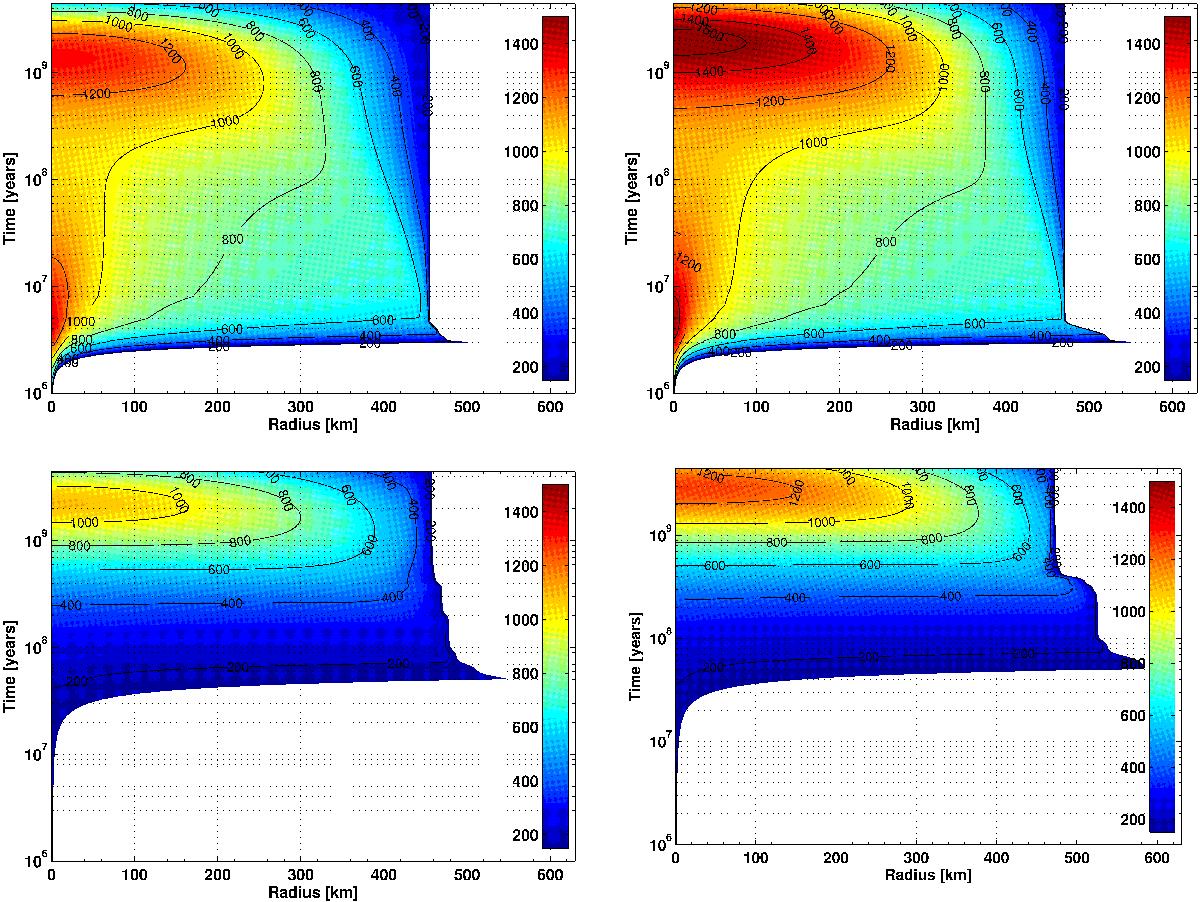Fig. 7

Temporal evolution of the radial distribution of the temperature in the interior of Ceres. Top row: fast accretion with t0 = 1 Ma and tac = 2 Ma. Bottom row: slow accretion with t0 = 1 Ma and tac = 50 Ma. Left column: Model CIa. Right column: Model CIb. Parallel to the porosity loss, the body shrinks to the final radius of 456 km. Relatively low activation energies of the minerals (Table 1) enable compaction at temperatures of mostly below 500 K. Thus, a substantial fraction of the interior consolidates before the hydrated minerals start to dehydrate.
Current usage metrics show cumulative count of Article Views (full-text article views including HTML views, PDF and ePub downloads, according to the available data) and Abstracts Views on Vision4Press platform.
Data correspond to usage on the plateform after 2015. The current usage metrics is available 48-96 hours after online publication and is updated daily on week days.
Initial download of the metrics may take a while.


